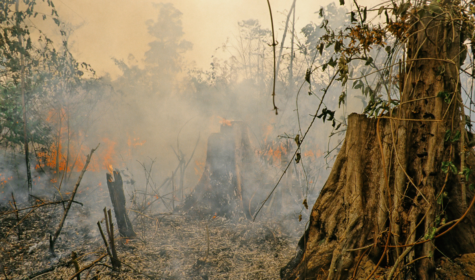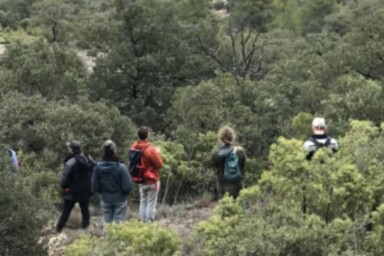President Bolsonaro assumed power in Brazil on 1st January 2019. He’d been elected in October on an outspoken populist platform. Controversial throughout the campaign, he drew crowds of supporters and strong opposition wherever he went. Upon taking power, he immediately rolled back environmental regulation and restricted indigenous land rights, all while he cosied up to agribusiness and farming lobbyists. At the time, journalists the world over highlighted the potential climate risk associated with his form of populist leadership. It would seem that their fears were justified. Since the beginning of his Presidency, a football field-size area of rainforest has been lost every minute on average – and that was before the fires ramped up the destruction.
The ongoing destruction of the Amazon Rainforest is not a new issue. Land use change in the region has been a problem for decades with more and more pristine rainforest being converted into fields. However, following growing international pressure and an increased awareness of climate change, Brazil did act to halt the rate of deforestation by introducing stronger environmental policies. As a result of these policies deforestation had begun to decline in Brazil and reforestation projects were beginning to thrive. However, as soon as Bolsonaro took office, this trend was reversed. Without threat of punishment or enforcement, the rate of deforestation once again began to climb as land was converted for cultivation.
The most common crop that is planted into the deforested landscape is soya for livestock. As the second largest producer of soybeans worldwide, Brazil accounts for 30% of the global production of the crop. It is the largest exporter of soya in the world and its total export of soya amounts to $25.9 billion. With trade between the US and China decreasing significantly in 2019 following President Trump’s trade war, Brazil’s export of soya to China has increased considerably.
The vast majority of this soya is genetically modified. In fact, GM soybeans occupied 97% of the total soybean area in Brazil in 2017– a number that is likely to have increased subsequently. Soya is not the only GM product that features heavily in Brazilian agriculture: 84% of their cotton and 88.9% of their maize is GM. The strong presence of biotech in Brazilian agriculture and the economic importance of GM has made industrial agriculture a strong political force in the country. This lobbying power facilitated the approval of GM sugarcane and GM eucalyptus for cultivation for bioenergy.
Brazil, however, does not grow soya for its domestic market. It exports it to industrial meat producers across the globe, to feed cattle in Germany, chickens in Spain and pigs in China. In fact, Brazilian soya is so ubiquitous that it is the lynchpin of globalised meat production which has become increasingly industrialised. Energy-intensive grain is used to feed animals that are housed in intensive units where producers want to fatten their animals in the shortest time to maximise their production and their profit. Additionally, when hundreds of animals are packed indoors without access to fresh air or space to roam, grain-based feed provides the only viable source of nutrition. Without the grain to feed animals, intensive livestock systems could not work.
Underpinned by global soya, industrialised meat has a significant carbon footprint and contributes to global warming. However, in responding to this challenge it should be remembered that the methods of production and the associated emissions of intensive livestock systems differ significantly to those of sustainably managed livestock, particularly, when one considers local landscapes and geography. It is not correct (nor responsible) to equate the GHG emissions of a concentrated feed lot in Texas, where thousands of heads of cattle are fed solely on grain, to a small, extensive herd that are grazed on permanent pasture in England.
Grazing cattle on permanent pasture that has been grown without agrichemicals and has a diverse sward (mixing nitrogen-fixing legumes, grasses and forbs) can help to mitigate climate change by sequestering carbon. Without ploughing or cultivating it and by allowing livestock to graze as they naturally would, levels of organic matter in the soil begin to rise. By building up soil organic matter, carbon can be drawn down into the soil and stored. This not only increases soil fertility, biodiversity and water retention, it can help to reduce emissions and mitigate climate change.
The SFT recognises that industrial livestock production poses a serious problem and we condemn the deforestation of the Amazon to produce soya to support it; however, we believe that sustainably managed livestock can be part of a climate solution.
While this piece gives a global perspective on Amazonian deforestation and agriculture, for more information on soya imported to the UK click here.





